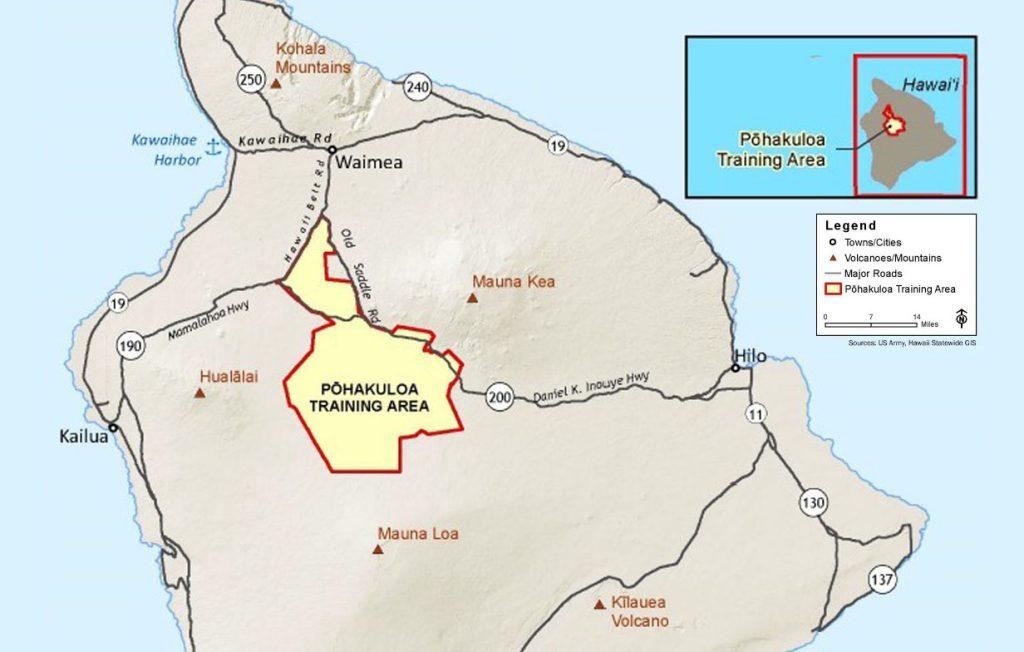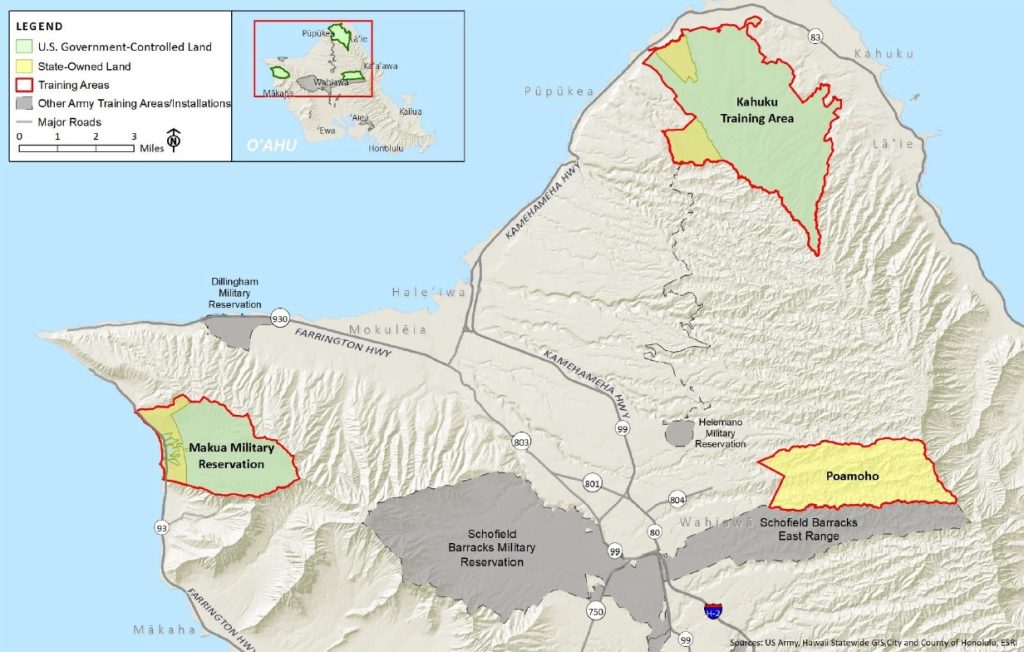Military Land Lease Renewal in Hawaiʻi
The U.S. Army’s current leases for training lands on Oʻahu and Hawaiʻi Island expire in 2029.

On Hawaiʻi Island, at Pōhakuloa Training Area (PTA), the Army has proposed retaining 19,700 acres of state-owned land.

On Oʻahu, the Army has proposed retaining 450 acres of state-owned land at Kahuku Training Area (KTA).
The Board of Land and Natural Resources (BLNR) rejected the Army’s Final Environmental Impact Statements (FEIS) for both Oʻahu and Hawaiʻi Island earlier this year. In response, the Army issued its Record of Decision (ROD) for PTA in late-July, and its ROD for Oʻahu training lands in early August. Governor Josh Green, M.D., and the Department of Land and Natural Resources, are working with the Army to ensure all legal requirements are met while considering next steps to achieve the best possible outcome for the people of Hawaiʻi.
Latest Documents
Key materials and references currently available for review
Other Released Documents
- August 20, 2025: U.S. Army Secretary Dan Driscoll Letter to Governor Green
- October 29, 2025: Summary of Federal Consultations and Path Forward for Army Training Lands in Hawaiʻi
On October 29, 2025, Governor Green transmitted a detailed memorandum to Secretary of the Army Dan Driscoll summarizing federal consultations held on October 23-24, 2025, following the signing of the Statement of Principles on military training lands. The letter documents Cabinet-level discussions with multiple federal agencies and outlines Hawaiʻi’s integrated $10 billion proposal—Advancing Defense and Community Goals for Hawaiʻi—to align national defense needs with community priorities in housing, infrastructure, energy, health, and environmental restoration.
Governor Green reaffirms Hawaiʻi’s commitment to national security while emphasizing that any possible land condemnation should be accompanied by a negotiated settlement that restores lands such as Mākua Valley, funds long-term environmental cleanup, and delivers lasting benefits to Hawaiʻi’s people. The letter continues the State’s call for a transparent, collaborative process that honors both readiness and respect for the land and culture of Hawaiʻi.
